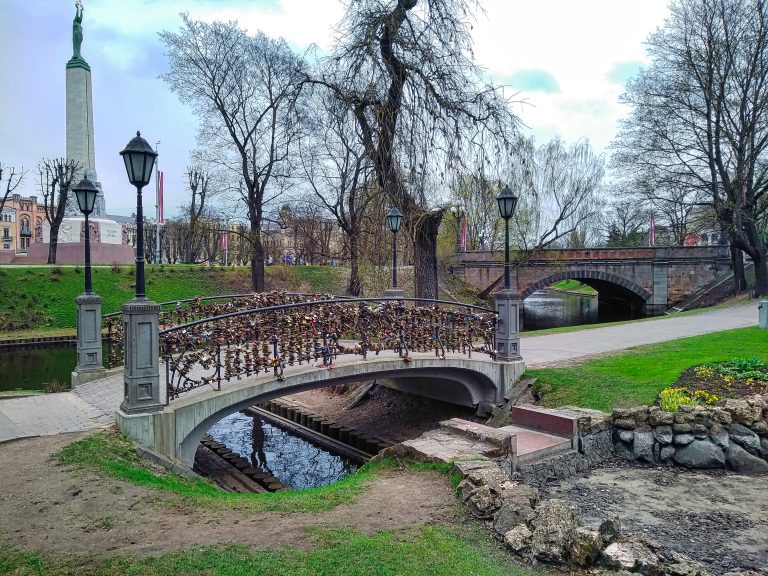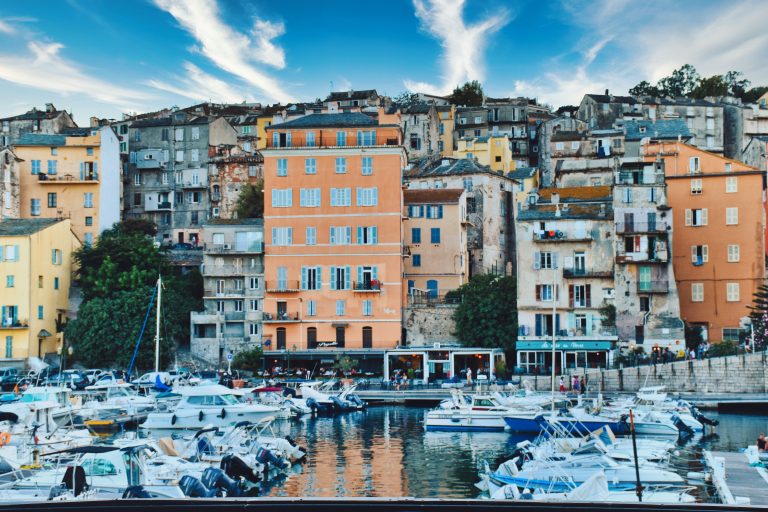
There’s nothing quite like seeing the glowing lights of the Northern Lights dance across the night sky. In this blog post, we’ll explore some of the best destinations across Europe where you can witness one of nature’s most beautiful spectacles – The Northern Lights. If you are wondering where to see Northern Lights in Europe? Europe has plenty of choices when it comes to viewing the spectacular Aurora Borealis, or Northern Lights. From quintessential Scandinavian destinations like Norway and Finland to lesser-known spots with just as much potential for unforgettable visuals.
So get ready for your adventure, grab your camera and keep reading as we tell you all about where to go and what activities there are to enjoy during your stay so you can maximize your chances of witnessing this amazing natural phenomenon! First, a few practical tips to maximise your chances of seeing the Northern Lights in Europe.
This post may contain affiliate links. If you click one of them, we may receive a small commission (for which we are deeply grateful as it supports our site) at no extra cost to you.
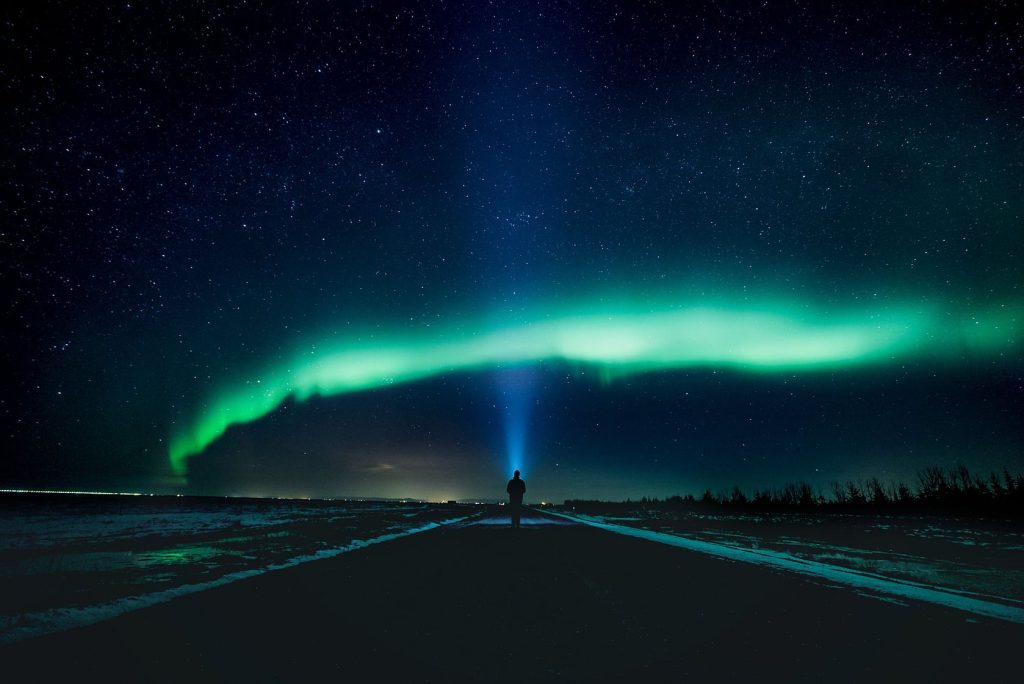
How to see the Northern Lights? // How to maximize your chances of seeing the Northern Lights?
Even if you find your dream location for hunting the Aurora, you still need to follow basic rules to see the
lights.
To maximize your chances of seeing the Northern Lights, you need 3 things to be present:
- Dark days
- Clear Skies
- High Solar activity
What do dark days mean?
- Come during the darkest season. In the northern hemisphere, this means between September
and April. - Stay away from light pollution. Go to uninhabited, rural areas, rather than cities.
- Come around the new moon when the days are the darkest.
How to find clear skies?
- Find a reliable local weather forecast website. Do not look at typical international weather
websites. - Focus on clouds forecast. Your aim is as few clouds as possible, ideally none. Find such places
and such times.
High Solar Activity
- High solar activity is crucially important for seeing the Northern Lights. It is also the hardest to forecast and understand. You may either leave this purely to luck or use a mobile app to help you or follow basic principles to maximize your chances.
- Aim for years with a favourable long-term sun cycle. Spoiler: 2023 and onwards are on track to be
amazing years for seeing the lights! - The best light shows often occur around yearly equinoxes, i.e. in September and March. These
are the months when the sun activity usually peaks. - Watch out for the so-called KP index. The higher, the better!
Do you need even more in-depth info on seeing the lights? This detailed guide on how to see the
Northern Lights in Iceland may help you.

Best Place to See Northern Lights in Europe
Kiruna Northern Lights
Kiruna, located in Swedish Lapland, is one of the best places to experience the awe-inspiring phenomenon of the Northern Lights. With its vast and serene wilderness, Kiruna acts as an ideal backdrop for this natural wonder.
The best way to get to Kiruna is by getting to Kiruna Airport and then taking bus lines in proximity to the city.
The best time of the year to view the Northern Lights in Kiruna is between August and Mid April, with December to February being the clearest months.
There are many ways to see the Northern Lights either on a self-guided tour, but we recommend you join a professional guide tour as they will know the best places to see the Northern Lights. You also have to get out of the city and into the wilderness. You could stay at Camp Alta Kiruna, which is a beautiful rustic accommodation located on the edge of a lake. The camp can organise your Northern Lights tour and also extras like snowmobiling and dog sledging.
As well as seeing the Northern Lights make sure to visit the Icehotel with its impressive ice hotel and sculptures. Every room is unique, and if you are brave enough, you could even stay there the night.
Lofoten Islands in Northern Norway
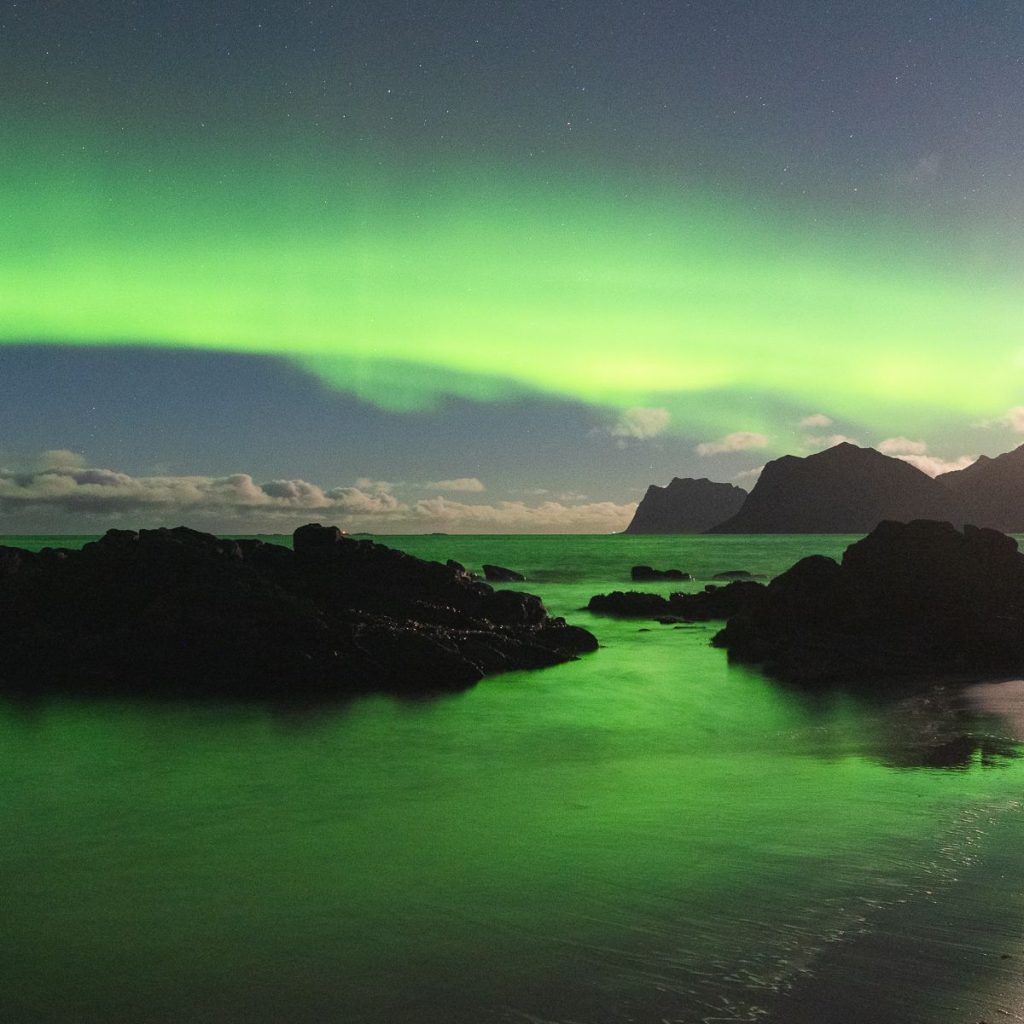


The Lofoten Islands are an archipelago in Northern Norway that is famous for its beautiful mountain scenery.
You can fly to either Svolvaer or Leknes in Lofoten, which usually requires a change at Oslo and then again at Bodø if flying internationally. You can also fly to Bodø, rent a car and then take a ferry from Bodø to Moskenes. Another option to visit Lofoten by public transit is to get a train from Oslo to Narvik and then a bus from Narvik to Lofoten.
Having the opportunity to see the Northern Lights is one of the reasons that visiting Lofoten in winter is a great idea! The best time to visit Lofoten for Northern Lights is from December to January. During this time, the sun doesn’t officially rise above the horizon, and the Polar Night is here. The arrival of this Polar Night means you get many hours of dark skies, making Lofoten perfect for Northern Lights spotting!
Despite the fact, you get so many hours of darkness in which to spot the Northern Lights. Another of the reasons that Lofoten is the best place to view the northern lights in Europe is that it’s so beautiful!
You’ll get mountain backdrops and beautiful beaches, and since the population is quite small, it’s not hard to find areas which are super dark and perfect for Northern Lights spotting!
Some of the best Northern Lights photography spots are from the bridge in Hamnøy, at one of the many beautiful beaches such as Haukland beach and Uttakliev and in Reine.
Lofoten is definitely suitable for children if you’re a family who enjoys outdoor activities. During winter in Lofoten you can enjoy dog sledging, visit the Viking museum, go snowshoeing, skiing or take a sea eagle safari in Trollfjord!
The downside to visiting Lofoten is that it doesn’t come cheap however, there are ways to save money when you’re visiting Norway.
Try to book somewhere that’s self-catering so you can cook most of your meals at home as eating in restaurants is very expensive but supermarkets aren’t too pricey. Fortunately, winter is the off-season for Lofoten, with the peak season in the summer, so accommodation is usually cheaper during this time.
Some of Lofoten’s most popular sights are in the southern part of the archipelago around Reine and Hamnøy. The Lofoten Cottages near Nusfjord are ideally situated for exploring Lofoten.
Reykjavik in Iceland
Seeing the Northern Lights is a bucket list activity for many. So why not see them in one of the ultimate bucket list destinations? Like Reykjavik in Iceland.
The capital city of Iceland has a lot of natural beauty. It is also a great place for tourists to visit because it has a wide range of attractions and things to do. No matter if you are visiting for a month or a day, you will not get bored easily here.
The Best time of year to visit Reykjavik to see the Northern lights is from September to late February. But if you want cheaper flights and accommodation, It’s highly recommended to avoid booking around Christmas.
You are not always guaranteed to see the Northern lights during your trip, but going with a tour guide does help. Many tours also have a policy where they will keep taking you out until you see them.
One great tip to make sure you see a glimpse of the Northern Lights in Iceland is to actually look at the sky through your camera. This is because your phone or camera lens can capture so much more light in a short amount of time.
Reykjavik is one of the best places to visit in Europe to see the Northern lights because it offers a wide range of accommodations and tours to make your trip as comfortable as possible. For a great place to stay, book the Residence Apartment.
Visitors cannot only see the Northern Lights from Reykjavik, but also go whale watching, or explore the beautiful nature just outside of the city. There are also many museums that tourists can visit in Reykjavik like The National Museum of Iceland.
For 7 days you are looking at paying $5000 for a family trip to Reykjavik. However, you can do a few things to cut costs down, like renting a car and driving to the main sites in Reykjavik and Iceland.
Lapland in Finland
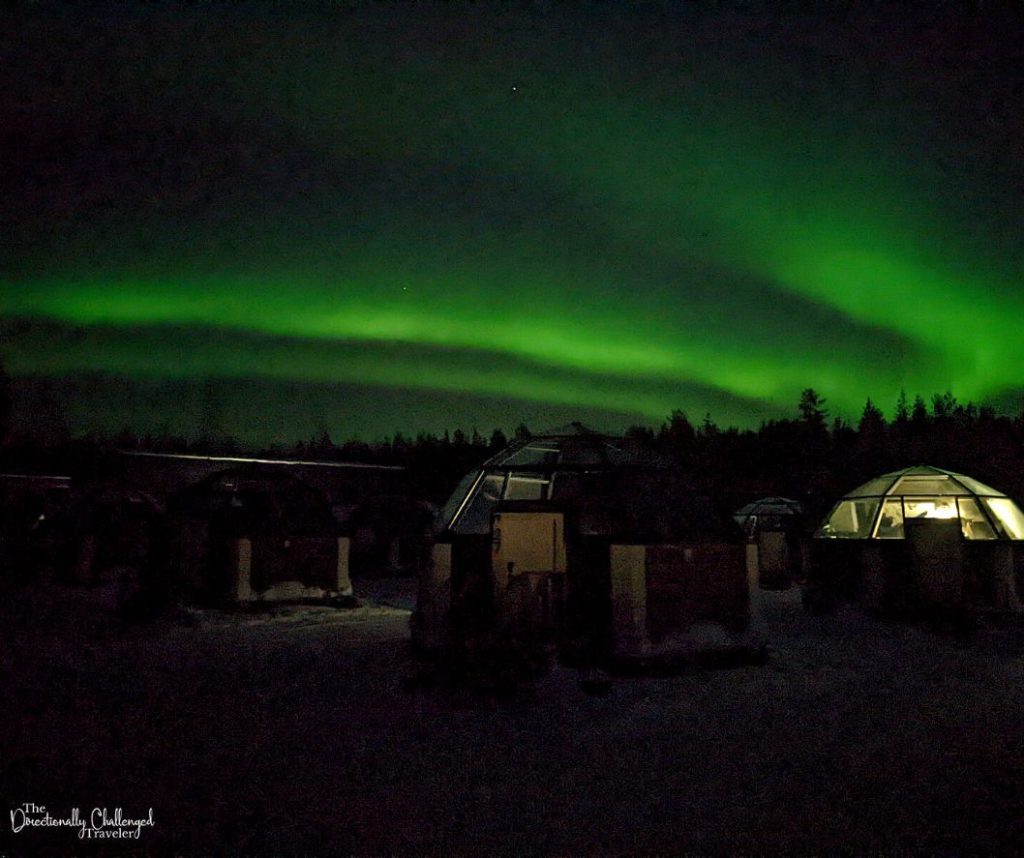
One of the best places to see the Northern Lights in Europe is the idyllic Lapland region in Finland. This region is located in the Northern part of the country, right above the city of Rovaniemi.
Most of the area is above the Arctic Circle, meaning on a clear, cold night the chances of seeing the Northern Lights are high. The winter season has the best chances of seeing them. It also covers the area in beautiful snow, making it a stunning winter wonderland. Northern light safaris go out most nights to remote areas. You can take a dog sledging or reindeer safari to make the night even more magical.
There are so many things to do Rovaniemi, making it a great place to explore the region from. Rovaniemi is a quick plane ride, or overnight train, from Helsinki. Learn about the indigenous Sami people and local wildlife at the Artikum museum. Families can visit Santa Claus Village, the official home of Santa, only 7 miles (10km) away. Be sure to bundle up and go outside. Winter doesn’t stop the people of Finland. You can go snowmobiling, snowshoeing, hiking, and even dog sledging!
An incredible place to see the Northern Lights is from a glass igloo. The Arctic Snow Hotel & Glass Igloos are remote enough that you can see the lights from your bed! They even have an optional alarm you can turn on in case the lights become visible later in the night. Usually, people only spend one night in a Glass Igloo. For the rest of the trip, Arctic Light Hotel in Rovaniemi is a destination in itself!
A seven-day trip to Rovaniemi typically costs around $2,000 per person. This, of course, depends on your accommodation and activities.
Ranua, Lapland
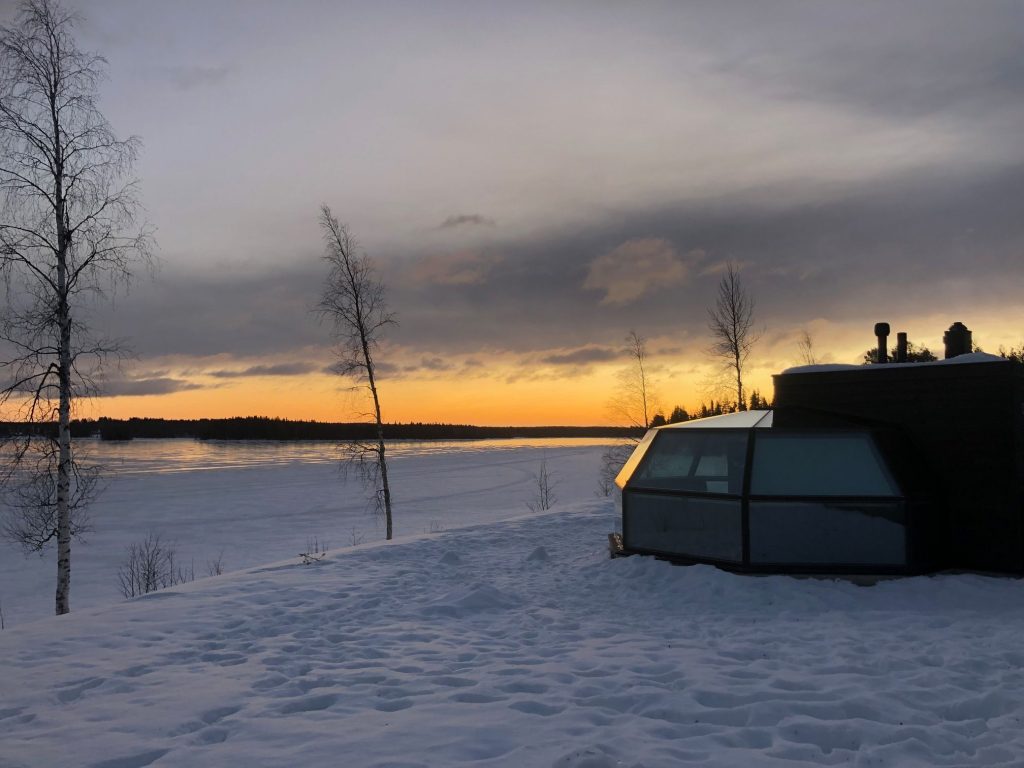
It is widely known that Lapland in winter is one of the best places on earth to witness the spectacular Northern Lights.
In Lapland, the locals believe that the shimmering lights are caused by the Arctic Fox’s tail swishing across the night sky.
One of the best places to see this natural phenomenon is Ranua, located around an hour south of Rovaniemi.
Ranua is void of light pollution, making it the ideal place to observe the Northern Lights in all their glory.
When visiting Ranua, it’s best to plan for at least two or three nights, as this will give you the best chance of seeing the lights.
The conditions need to be super dark and very clear. You can look for the lights from wherever you might be in Ranua but it’s much more fun to take a tour.
You can experience the Northern Lights on a snowmobile, husky safari, horse-drawn carriage or van. All tours depart from Gulo Gulo village, located near the Ranua Wildlife Zoo.
For those travelling with children, you may prefer to take a horse-drawn carriage or a van out to see the Northern Lights.
To get the best pictures, make sure to bring a tripod along or purchase one for the trip. If you’re using a smartphone to capture the lights, switch on night mode and ask your tour guide or fellow travellers for advice.
Lapland is not a cheap holiday destination. For three nights, including all accommodation, transport, tours and getting to Lapland you can expect to pay between $1,000 to $3,000.
This is largely dependent on the type of accommodation you choose to stay in and the tours you take.
For those looking to really splurge, consider staying at the Arctic Fox Igloos, which offers a chance to watch the lights from your bed.
Alternatively, for a more budget-friendly option, check out Gulo Gulo Holiday Village – they have some amazing cabins/apartments available.
No matter how you choose to see them, the Northern Lights in Lapland are sure to be a magical experience for the whole family that you’ll always remember.
So, pack your warmest clothes and head to Ranua for the best chance of seeing this stunning natural wonder, a true once-in-a-lifetime experience.
The Scottish Highlands

The Scottish Highlands is a beautiful and rugged region located in the northern part of Scotland, known for its stunning landscapes, rich cultural history, and abundant outdoor recreational opportunities. It is also one of the best places in the UK to see the Northern Lights.
The best time to visit the Scottish Highlands to see the Northern Lights is during the winter months, from October to April. This is when the Northern Lights are most active and visible, and when the skies are typically clear and dark, which are ideal conditions for viewing the lights.
The Scottish Highlands is considered one of the best places to see the Northern Lights in the UK because it is far from major cities and sources of light pollution, which can interfere with visibility. The region also has a high latitude, which makes it more likely to see the Northern Lights. To view the Northern Lights in the Scottish Highlands, it is best to head to a dark, open location with a clear view of the northern horizon.
Some of the best places to view the Northern Lights in the Highlands include the Cairngorms National Park, the Isle of Skye, and the North Coast 500 route. The Scottish Highlands is a family-friendly destination, and children will enjoy the many outdoor activities available in the region, such as hiking, mountain biking, fishing, and birdwatching. There are also many charming towns and villages to explore, such as Inverness, Aviemore, and Fort William.
The cost of a holiday in the Scottish Highlands will depend on factors such as the time of year, the length of the stay, and the type of accommodation chosen. Prices for a holiday in the Scottish Highlands can range from relatively affordable to quite expensive, depending on the budget and preferences.
For a place to stay, the Toravaig House Hotel is a good recommendation. It is a charming and stylish hotel located on the Isle of Skye, with breathtaking views of the surrounding landscape. The hotel offers comfortable and well-appointed rooms, as well as a restaurant and bar, making it a great base for exploring the Scottish Highlands and experiencing the Northern Lights.
Victoria from GuideYourTravel
Luleå, Sweden
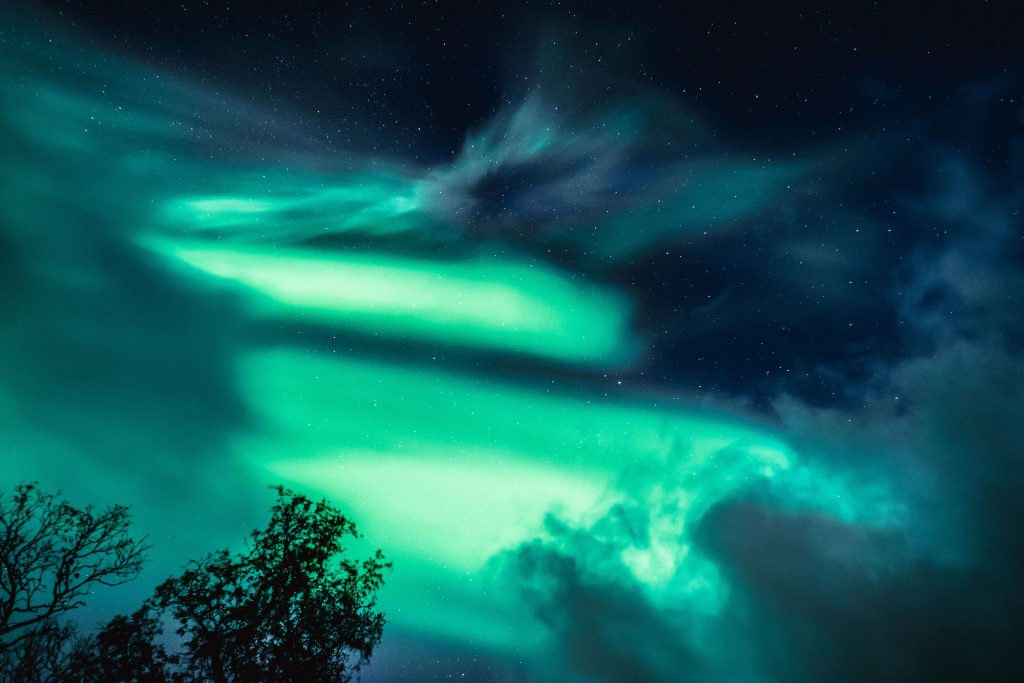
Luleå is a coastal city in Swedish Lapland just a couple of hours away from the Arctic Circle and the Finnish border. This makes it one of the best places to see the northern lights in Europe. To get there, you will want to fly into the Luleå airport. It’s accessible from any European city, and you will have to make a brief stop in Stockholm. It takes just 75 minutes to fly from Stockholm to Luleå.
The Northern lights can occur at any point during the dark hours, and in Luleå, they are visible from late August until early April. The longer you stay during your visit, the more chances you have to see the aurora borealis. A tour to hunt for the northern lights is often recommended, as locals will know exactly where to go for the clearest skies. Besides, most tours are run by professional photographers who can show you how to set up the camera to take incredible pictures too.
Luleå is one of the best places to see the aurora borealis thanks to its location, so far, up north and so close to the Arctic circle. There are many other activities to enjoy in Luleå and many families come here with their kids to hike, skate, and bike in the snow. You can take a snowmobile tour and take a Sami reindeer experience too. Needless to say that the area becomes a Nordic winter wilderness that’s so worthy of being photographed.
As a recommendation, stay in Elite Stadshotellet Luleå hotel, which is close to the centre and all amenities. Breakfast is included in the hotel price.
Tromsø, Norway

Tromsø is an exciting place to see the Northern Lights! They are only visible in the wintertime, so your best chances to see them are between October and March. The best way to view them is to head out towards less populated areas, either in a rented car or on a tour with a guide who can show you the best spots. With less light pollution from the city, you’ll be able to see the aurora borealis more clearly.
For photographing the lights, make sure you bring a tripod to stabilize your camera for crisper photos. For more instructions on how to take great photos of the lights, consider joining a photography-specific tour, where a photographer guide will help you set up your camera with the best settings to capture this amazing phenomenon.
A trip to Norway in the winter is a great way to introduce your children to exciting outdoor activities. If you have young children who need to go to bed early, take into consideration that the Northern Lights are best seen in the late evening, which makes for some late nights chasing the lights. There are plenty of other fantastic activities to do in Tromsø, such as skiing, sledging, hiking, snowmobiling, dog sledging, snowshoeing, whale watching, visiting reindeer, and so much more!
The cost of a trip to Tromsø varies greatly, depending on where you are travelling from, how long you are staying, and how many people are in your party. Note that Norway is considered an expensive country to visit. Guided Northern Lights tours in Tromsø generally run between $100-$150 per person. If you have the opportunity, one of the best places to stay in Tromsø is the Tromsø Ice Domes, a snow and ice hotel that is only open during the winter months!
WestFjords in Iceland
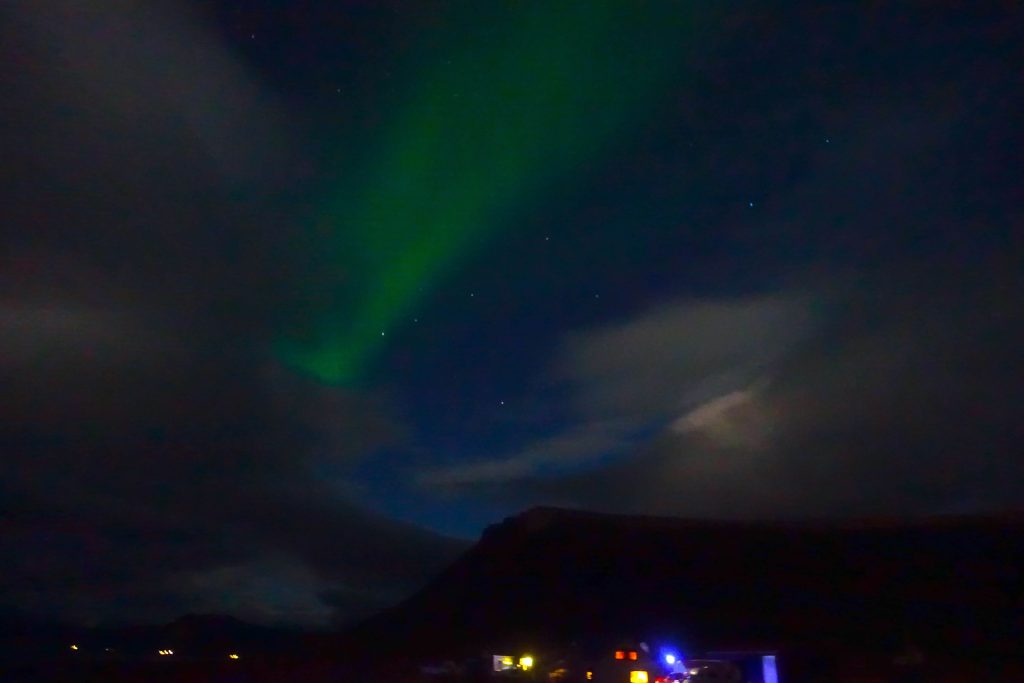
One of the best things to do in Iceland in October is watching the Northern lights, and the WestFjords is
the perfect place to do it. There are more dark hours in the area and fewer clouds than in other areas
of Iceland. At this time of the year, the Northern lights, start to show in the night sky and the roads
are still not frozen. The WestFjords are located in the North West of Iceland. The area is still out
of the main tourist circuits, and it features some landscapes of breathtaking beauty.
The quickest way to get to the WestFjords is by plane from Reykjavík, but you can also get there by
car, bus or Ferry. I recommend renting a car to be able to reach the main attractions in the area, such
as the Dynjandi waterfall, one of the many hot springs in the area and the Látrabjarg coast, where
you can see puffins.
To maximize your chances of watching the Northern lights check the Aurora forecast by the
Icelandic meteorological office. It gives you information about the areas with clear skies and the
intensity of the auroras. Bring a camera with you. A smartphone is not enough for a good-quality
picture of the Northern lights.
The cost of a week in the WestFjords is around 1000 dollars per day, and it is a great experience to
be done with kids. You can stay in this hotel that is quite close to the Dynjandi waterfall, and it has a
kitchen.
Vik in Iceland

Vik, Iceland, is one of the most magical places to see the Northern Lights. To reach this small fishing village, you’ll need to fly into Reykjavik, the island country’s capital city and make the two and a half hour drive along the southern coastline.
While it’s theoretically possible to see the Northern Lights in Iceland year-round, your best bet is to visit during the winter months, between September and April, when the nights are long and dark. Remote villages, like Vik, are better for viewing the Aurora Borealis, thanks to the limited light pollution and the unobstructed skies.
Consider watching the sunset at the famed Reynisfjara black sand beach, with columnar basalt cliffs and dramatic sea stacks jutting out of the sea. Eventually, once the sky falls dark and the stars twinkle to life, you’ll have a wide, open view of the night sky and, thanks to the otherworldly sea stacks, an interesting background for photos. Just make sure to include lots of layers on your Iceland packing list– it gets quite literally freezing at night here!
Vik is a popular stop for all visitors to Iceland, not just due to Reynisfjara, but also other popular sites, like the Sólheimasandur plane wreck, or the Seljavallalaug thermal pool. Whether you’re a solo traveller or travelling with family, you’ll find plenty of things to do here.
Iceland is historically a very expensive place to visit, costing between $100 per person/day for budget travellers and up to $200+, if budget is less of a concern. Hotel Vík í Mýrdal is a good mid-range option, perfectly melding modern amenities with Nordic cosiness.
Jokulsarlon Glacier Lagoon

One of the best places to see the northern lights in Europe is Jokulsarlon Glacier Lagoon.
In fact, this large glacial lake on the southeastern perimeter of Vatnajökull National Park is so magnificent that it has been featured in countless movies and TV shows, like Game of Thrones.
To get here, either book a tour or drive from Reykjavik, which takes about four and a half hours,
The drive is worth doing, though, since it is stunning. Plus, this glacial lagoon is conveniently located on Route 1 of the Ring Road – halfway between Skaftafell Nature Reserve and Höfn.
In terms of seeing the Northern Lights, the best time to visit is between September and mid-April, when skies are dark and clear and full of active lights.
It’s also a great spot to see the aurora since clear boulders of ice sit on a black sand beach and beautifully reflect the colours of the northern lights. So, you’ll enjoy a wide array of reflected hues that make for stunning photographs.
Just be sure to check the weather forecast before you visit since you’ll need the right amount of solar activity and will be unable to see this natural phenomenon on a cloudy day.
You’ll also want to stay up late and be prepared to wait for the perfect chance to see these incredible lights.
You can also bring the kids since other fun things to do in the area include hopping aboard a zodiac boat and zooming through the water. This tour costs around $95.00 per person and allows you to get up close and personal with the amazing glaciers here.
Alternatively, you could book a day tour here from Reykjavik for about $160.00 per person. It’s a long day, though, since the trip will take around 14 hours and is much more expensive than visiting yourself since you’d just need to pay for gas, a rental car, and an optional boat tour.
Then, after marvelling at the northern lights, spend the night at Skyrhúsid Guest House It’s a quaint little farmhouse that sits just 10 minutes from the glacier and that features stunning views of the surrounding area.
Utsjoki, Finland
Travelling to the world’s happiest country can be rewarding, and a great escape for those who adore nature. If you appreciate solitude and enjoy nature photography, then Utsjoki, Finland should be on your bucket list. Many like to visit this municipality to observe the Northern light and capture it on a camera.
The best time of the year to visit Utsjoki, Finland, is somewhere between March to April to observe the Northern Light and enjoy some winter sports activities. Thus, be ready to capture this amazing
phenomenon. You may want to use a tripod or monopod to secure stability and glimpse a better
picture.
Utsjoki city is at the summit of the Ailigas fells where you can climb to enjoy a beautiful view of Tenojoki
and Utsjoki River Valleys. There are three famous falls in the area: the holy fall is located in Utsjoki area, and the other two are in Karigasniemi. They are called the Nuvvus-Ailiga fell and Ailigas fell.
The city is located on the boarder of Norway, where you can cross the Sami bridge. The Tenojoki river is
famous for salmon fish that swim all around it. Therefore, you can visit a local restaurant to live, feel, and taste the Finnish culture and traditions, or you can plan a fishing trip to the Tenojoki river.
I would highly recommend you stay at Holiday Village Valle. It is the best-rated hotel in Utsjoki, and is located at the heart of the Utsjoki village. Thus, you can experience the Finnish’s authentic culture and enjoy some shopping areas near you and eat at its finniest restaurants.
Have you heard of the Southern Lights?

When you’ve had your fill of hunting the northern lights, why not head below the equator? To see the Southern Lights in New Zealand?
Aurora Australis, or the southern lights, are seen near Antarctica. There’s no need to travel all that way though, as at certain times of the year, they’re also seen from Aotearoa New Zealand.
March to December is prime viewing season as the chilly weather brings the best chance of seeing the sky dance. As luck would have it, this is also the best chance of seeing clear night skies with the Milky Way passing overhead. For keen astrophotographers, this is a match made in heaven.
Typically, the further south you travel, the better your chances of seeing these incredible natural phenomena. In New Zealand, that means that Lake Tekapo, the Otago Peninsula, the Catalans and Stewart Island are most active.
Many are surprised to learn of a key difference between the northern and southern lights. Down south, pink and purple are the most prevalent colours seen in the sky, with yellow and green playing a supportive role. This makes a southern-lights viewing experience significantly different to the greens generally seen in the north.
Outside of the southern lights, New Zealand offers travellers a lot. During the winter season, the South Island is home to a number of family-friendly ski fields, and adventure activities like jet boating and bungy jumping are on offer.
Though New Zealand is not known as a budget holiday destination, it is possible to keep costs down by booking in advance, or even freedom camping – though it will be cold in the middle of winter.
We hope you have found some inspiring material here about the Northern Lights and this article helps you to organise your own amazing trip. Please do share, save and PIN to help others.
Thank you, and see you on the next adventure 🙂


